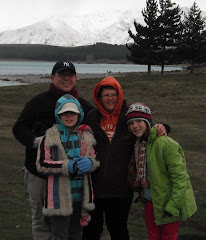This morning’s adventure took us deep into Rome’s past—first to the Museo e Cripta dei Cappuccini, then to the city’s oldest catacombs.
We began with a short walk to our meeting point in a nearby square. It took us just 15 minutes on foot, which made us realize that last night’s taxi ride had been a little too long—quite literally, we’d been taken for a ride. Chatting with fellow travelers today, we discovered that this is a fairly common experience with Roman taxis. To be fair, our encounters so far have ranged from good, to okay, to simply expensive.
 |
| Photo from web |
 |
| Traditional monk clothes |
 |
| Outside the monastery |
 |
| Books on display at the monastery |
Our guide gathered a dozen of us and led the group on a five-minute stroll to the Museo e Cripta dei Cappuccini. The tour began with an audio guide explaining the history, purpose, and traditions of the Capuchin order.
The highlight was the crypt itself: five hauntingly beautiful rooms decorated with the remains of some 3,700 monks and notable locals. Bones and skulls were arranged in intricate patterns, forming a solemn reminder of mortality. Out of respect, photography was forbidden—so the image accompanying this post comes from the official site of the order.
 |
| Tour Italian style black Mercedes van |
From the monastery, we boarded two sleek black Mercedes vans and crossed the city in about 20 minutes to reach Rome’s oldest catacombs. Descending 13 meters underground, we explored the second of five levels.
 |
| Old catacombs of Rome photo from web |
 |
| Oldest catacombs of Rome photo from web |
Here, we learned that nearly half a million early Christians were buried in niches carved into volcanic rock. The stone was soft when first cut, but hardened once exposed to air, making it ideal for these vast underground cemeteries. By the 10th century, the catacombs were emptied and forgotten, only to be rediscovered in the 19th century and made safe for visitors.
Some tombs still bear marble and clay seals, and a few bodies remain, dating from the 2nd to the 10th century. Our guide kept the tour tightly structured—about 40 minutes of fascinating history, though we would have loved more time to wander.
 |
| Tiber River Rome |
After resurfacing, the vans dropped us near the Circus Maximus and the Mouth of Truth. From there, we set off on our own exploration.
We found the Tiber River glistening in the sunlight and wandered past buildings that told the story of Rome’s layered history—structures blending elements from antiquity, the Middle Ages, the Renaissance, and even the 20th century. Romans truly reuse everything, and the city wears its past like a patchwork quilt.
After a couple of hours of happy snapping and street wandering, we returned to our apartment.
 |
| Circus Maximus |
 |
| Mouth of truth |
 |
| Feral cat sanctuary colony |
With departure looming tomorrow, we packed our bags and dutifully carried our rubbish 250 meters to public bins—apparently a strict requirement, with an €80 fine if ignored. A quirky Roman detail we hadn’t encountered before, but part of the fun of travel is embracing these local quirks.
We ended the day at Ristorante La Taverna dei Monti, where the staff greeted us warmly. Over a delicious meal, we shared stories with a charming French couple from Paris. Those who know us (Cos especially) know that we never pass up a good chat, and this evening was no exception.
Overall a day of contrasts: from the solemn silence of crypts and catacombs to the lively streets and warm conversations over dinner. Rome continues to surprise us at every turn.
















































